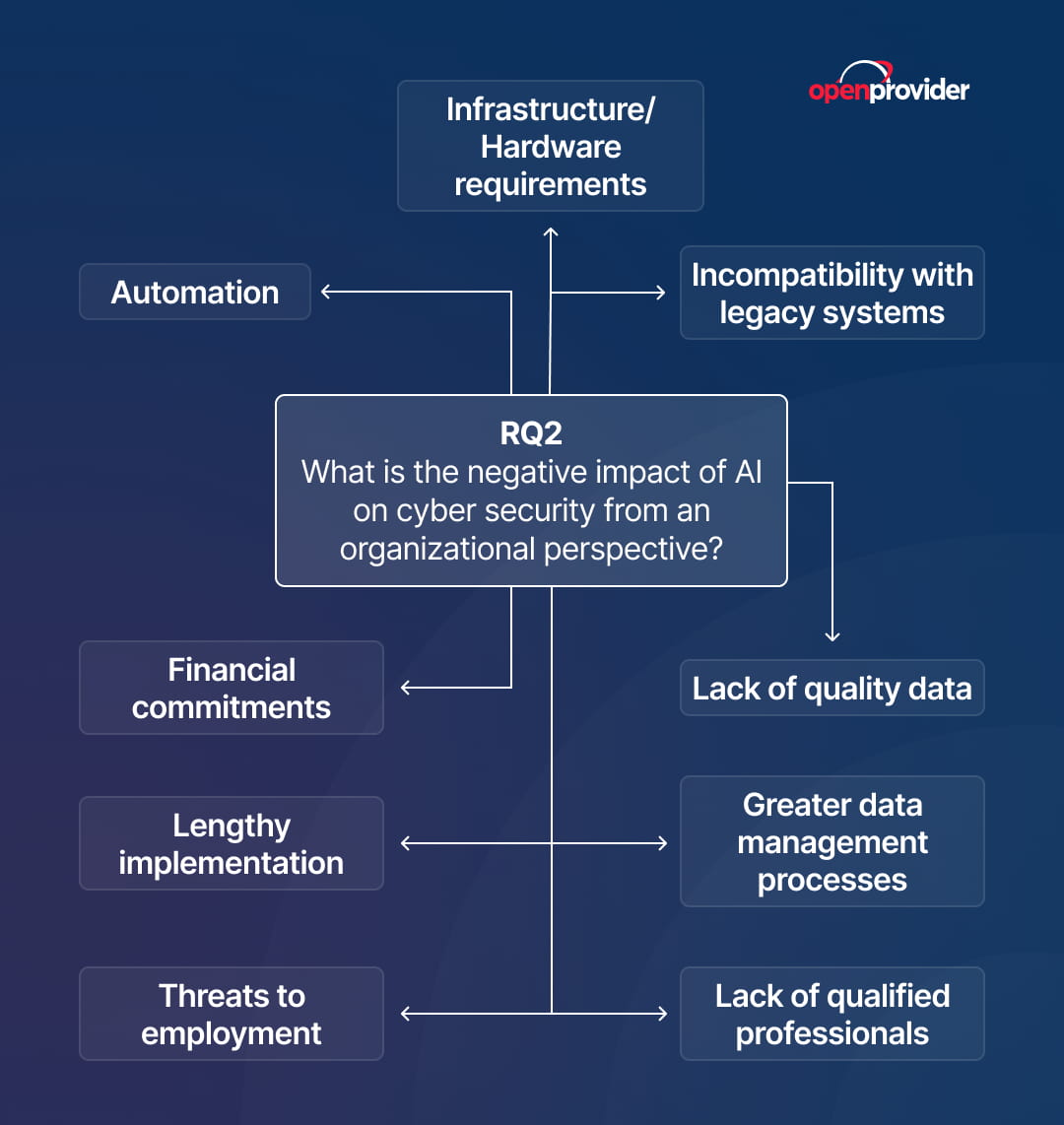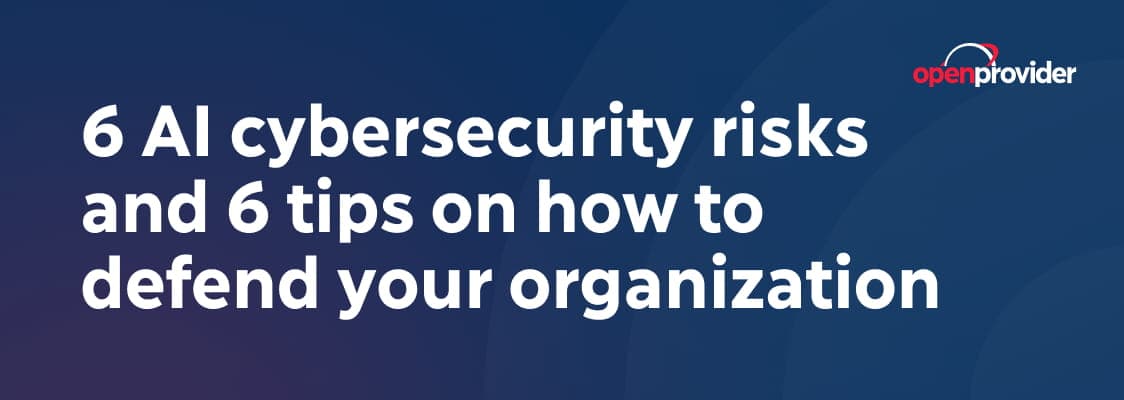Understanding AI cybersecurity risks: what you need to know
Artificial Intelligence has become a foundational element in modern business operations.
From automation and data analysis to customer support and content creation, AI is reshaping how digital infrastructures work and, consequently, AI cybersecurity risks are emerging.
In fact, as AI grows in sophistication, so do the threats associated with it. It is a double-edged sword that can both defend and attack.
On one side, it helps organizations detect and mitigate threats faster than traditional systems. On the other, bad actors are now using AI to launch more complex, targeted, and scalable attacks than ever before.
This article explores the top six AI-driven threats impacting small and medium-sized businesses (SMBs), digital agencies, hosting providers, and domain resellers.
From deepfakes and data poisoning to AI-powered phishing and privacy violations, we’ll unpack each threat in plain language and explain how you can protect your business using practical strategies and tools, many of which are already built into Openprovider’s security-focused product suite.
Organizational risks – types of AI threats
Artificial intelligence is transforming cybersecurity on both sides of the fight.
While AI helps organizations detect threats faster, it also enables attackers to scale, automate, and evolve their tactics.
According to a recent research published by ScienceDirect (The impact of artificial intelligence on organisational cyber security: An outcome of a systematic literature review), AI-powered tools are now directly linked to the increase in targeted phishing, identity spoofing, and deepfake-based impersonation attacks.
And as AI evolves, so do the countermeasures: ICANN’s SSR team is engaging with AI-based threats although, as per July 2025, DNS abuse cases are a core focus.

In the next sections, we’ll explore the most common AI-related risks businesses face today and outline how to reduce your exposure with practical, scalable measures.
1 – Deepfake technology threats
Deepfake content (synthetic media created by AI) is becoming a tool for impersonation and fraud.
For instance, attackers could mimic a CEO’s voice or a support agent’s face to manipulate staff or customers into taking harmful actions, from sharing credentials to authorizing payments.
These attacks are especially dangerous in distributed teams and remote support environments.
Pro tip: Use SSL certificates to ensure encrypted, verified communication between your platform and its users, helping you safeguard against fraudulent content delivery and identity spoofing.
2 – AI-powered phishing attacks
Phishing has evolved. AI tools can now create highly personalized, mistake-free phishing emails that mimic tone, writing style, and internal communication patterns.
These hyper-targeted attacks are harder to detect and more likely to succeed, especially for businesses managing large client bases.
Pro tip: Implement email protection services to filter out malicious messages before they reach your inbox, and reduce the risk of AI-generated phishing scams.
3 – Data poisoning and manipulation
In AI systems, poisoned data can lead to skewed outputs or exploited vulnerabilities.
Attackers may tamper with datasets or model training inputs to weaken decision-making or inject malicious logic. This risk affects both AI-powered services and the systems that depend on them for automation or analysis.
Pro tip: Strengthen your DNS control with DDoS protection to validate the integrity of data sources and monitor for unauthorized changes, especially for API-based environments.
4 – Autonomous malware and ransomware
AI is accelerating the creation of adaptive malware that can bypass traditional defenses, self-replicate, and adjust in real time.
Autonomous ransomware can identify high-value targets within a system, delay activation to avoid detection, or even negotiate ransom amounts dynamically.
5 – Privacy violations from AI data mining
AI can scrape and aggregate massive volumes of personal and behavioral data from seemingly unrelated sources.
This is creating new privacy concerns for companies holding sensitive user or client data, especially under regulations like GDPR or NIS2.
Even legitimate AI tools can expose vulnerabilities if data isn’t properly anonymized or siloed.
Pro tip: Again, make sure your SSL/TLS are up to date and configured correctly to protect data in transit and maintain user trust, and refer to premium SSL certificates for maximum protection.
6 – Algorithm bias and security vulnerabilities
AI systems trained on incomplete or biased data can behave unpredictably, excluding users, misclassifying threats, or creating loopholes that attackers can exploit.
This is especially risky when using AI for access control, fraud detection, or content moderation.
Are you unsure about the security level of your website? Insert your website name and run a free security scan
Practical tips to defend your organization against AI threats
As AI-driven threats evolve, so must your security strategy.
Defending against these risks doesn’t always require complex infrastructure: it often starts with awareness, hygiene, and smart process improvements.
Below are six practical, high-impact actions that businesses of any size can take to strengthen their security posture and reduce exposure to AI-powered attacks.
Employee training and awareness
AI threats often begin with human error. Phishing, impersonation, and social engineering attacks succeed when employees aren’t aware of the signs.
Building a culture of cybersecurity through regular training sessions, simulations, and clear internal protocols is one of the most effective and affordable defences any organization can implement.
Implementing robust email security solutions
Email remains the number one attack surface. AI-generated phishing emails are harder to detect, making traditional filters obsolete. Upgrading to a modern email security solution with behavioral analysis, spoof detection, and anomaly monitoring is critical to block these advanced threats before they cause damage.
Updating the AI software
Outdated systems are low-hanging fruit for attackers.
AI models and frameworks often rely on open-source components that may have known vulnerabilities. Implementing a consistent patching schedule and tracking updates across your stack helps eliminate points of entry before they can be exploited.
Strengthening data integrity and access controls
AI systems rely on clean, accurate data.
If attackers gain access to manipulate this data during collection, storage, or training they can distort outputs or undermine the model.
Limiting access to sensitive data, using role-based permissions, and implementing audit logs are key to preserving integrity.
Conducting regular AI security audits
AI is not a “set and forget” solution.
Regular audits are essential to identify model drift, exposure to adversarial inputs, or changes in performance that could indicate compromise. Businesses should include AI-specific checkpoints in their broader security assessments and compliance routines.
AI-driven security solutions for proactive defense
Fighting AI with AI is no longer optional. Defensive AI can detect subtle threats faster than traditional tools, spotting patterns, anomalies, and malicious behaviors in real time. Integrating AI-powered threat detection, behavior analytics, or automated response tools into your infrastructure allows you to stay one step ahead of attackers.
How Openprovider enhances your AI cybersecurity
At Openprovider, we understand that hosting providers, digital agencies, and IT resellers face increasingly complex threats.
That’s why our control platform is designed with built-in security at every level.
From premium SSL certificates that encrypt your client communications, to enterprise-grade spam email protection that blocks AI-crafted phishing attempts, and premium DNS control that defends against spoofing and data manipulation, our solutions are here to help you stay secure as AI threats evolve.
By combining technical excellence with automated abuse management, we allow you to manage your domains and your reselling business, providing you with solutions that protect your customers without stretching your internal resources.


